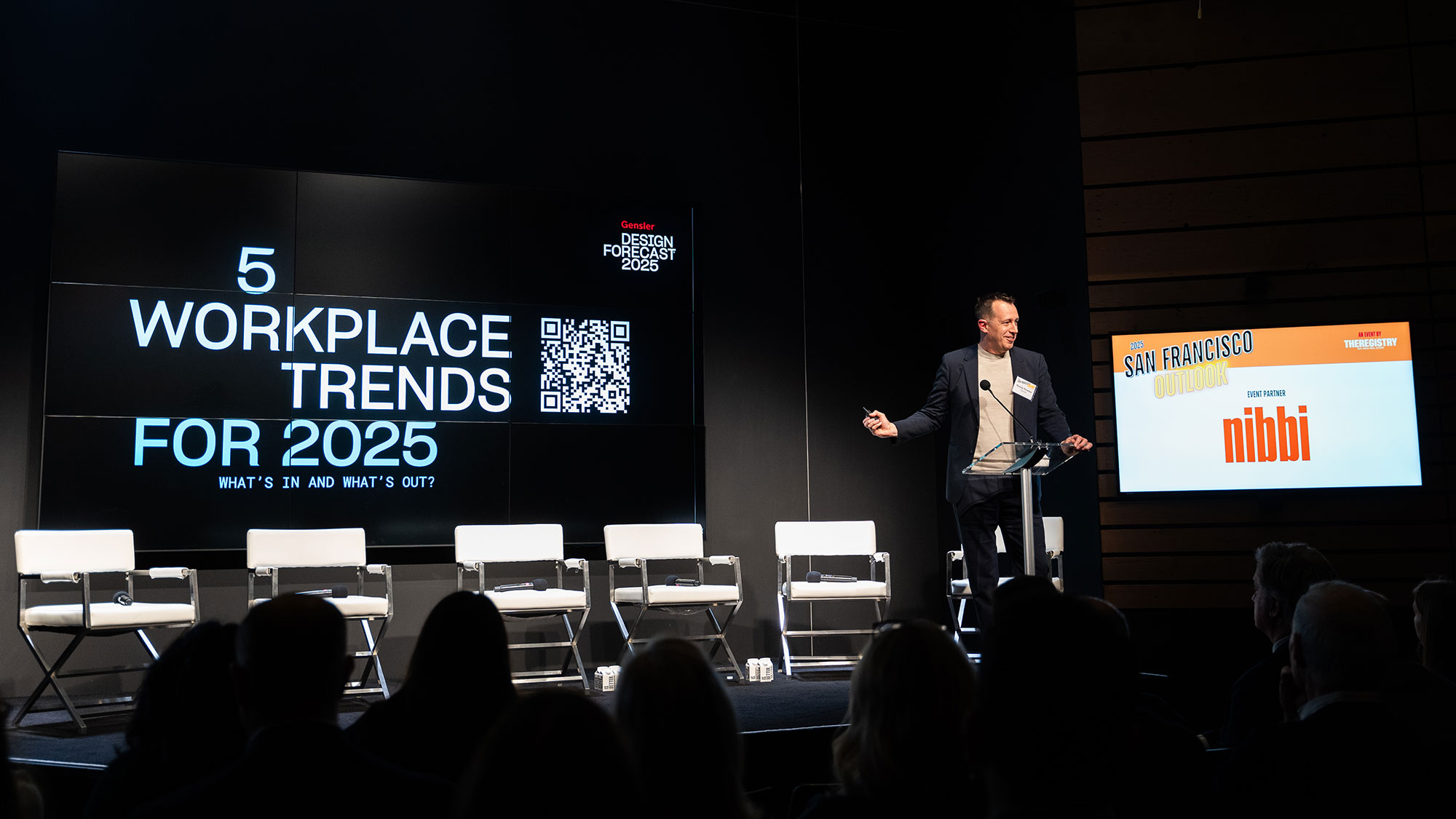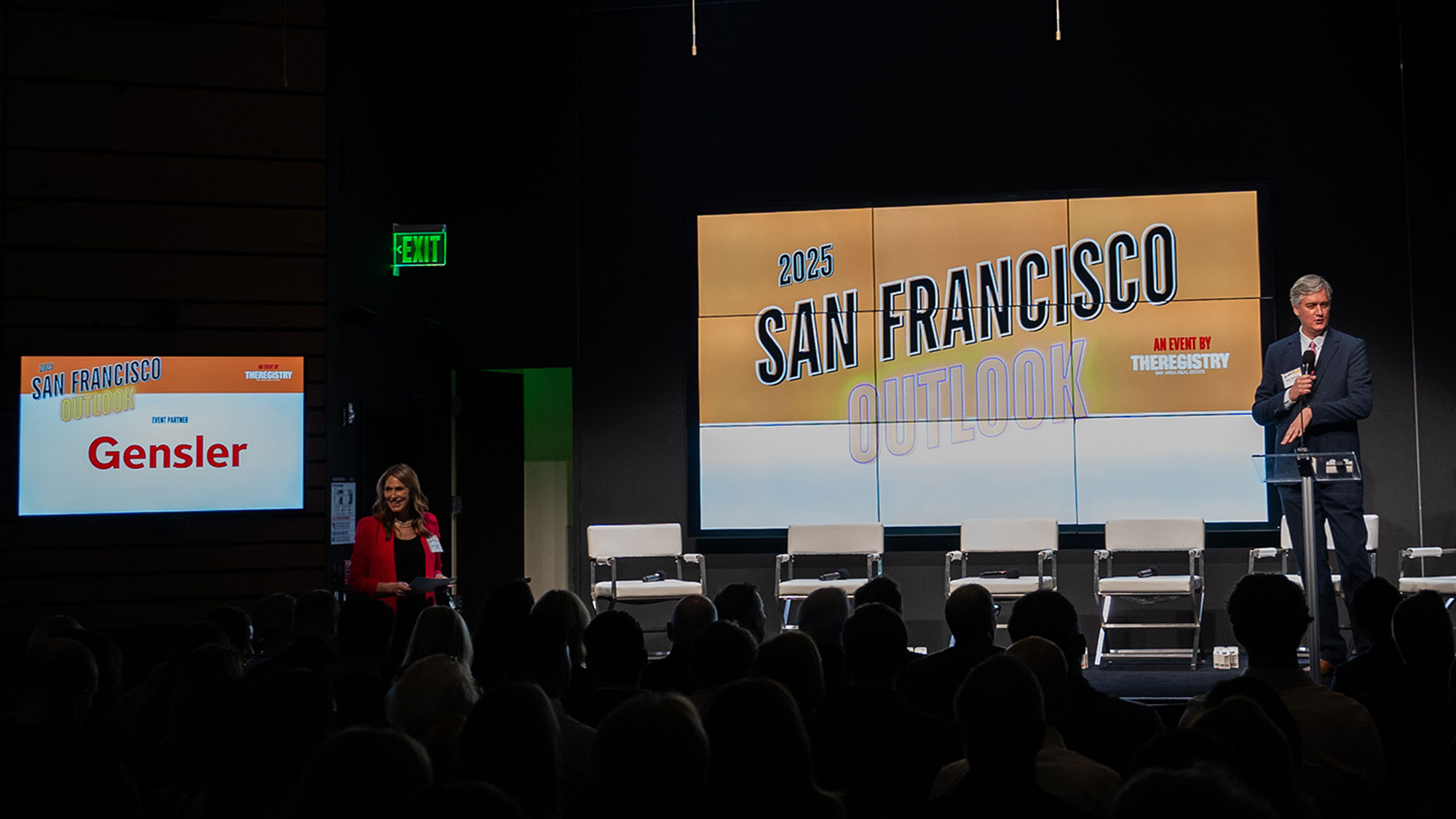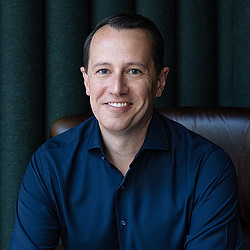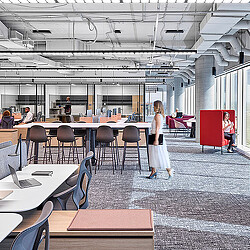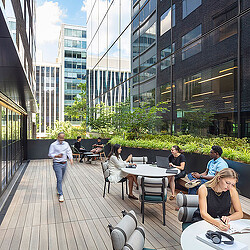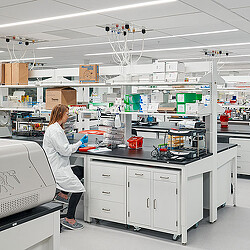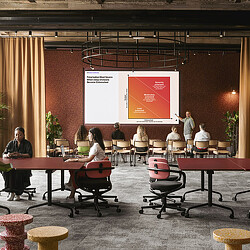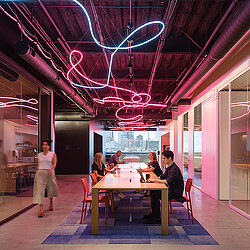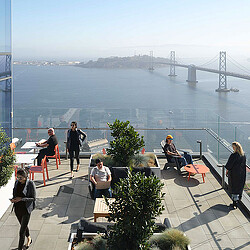What’s Next for the Workplaces of San Francisco?
As the city’s office market navigates recovery, landlords, building owners, and employers must consider the varying needs of future real estate vs. the status quo.
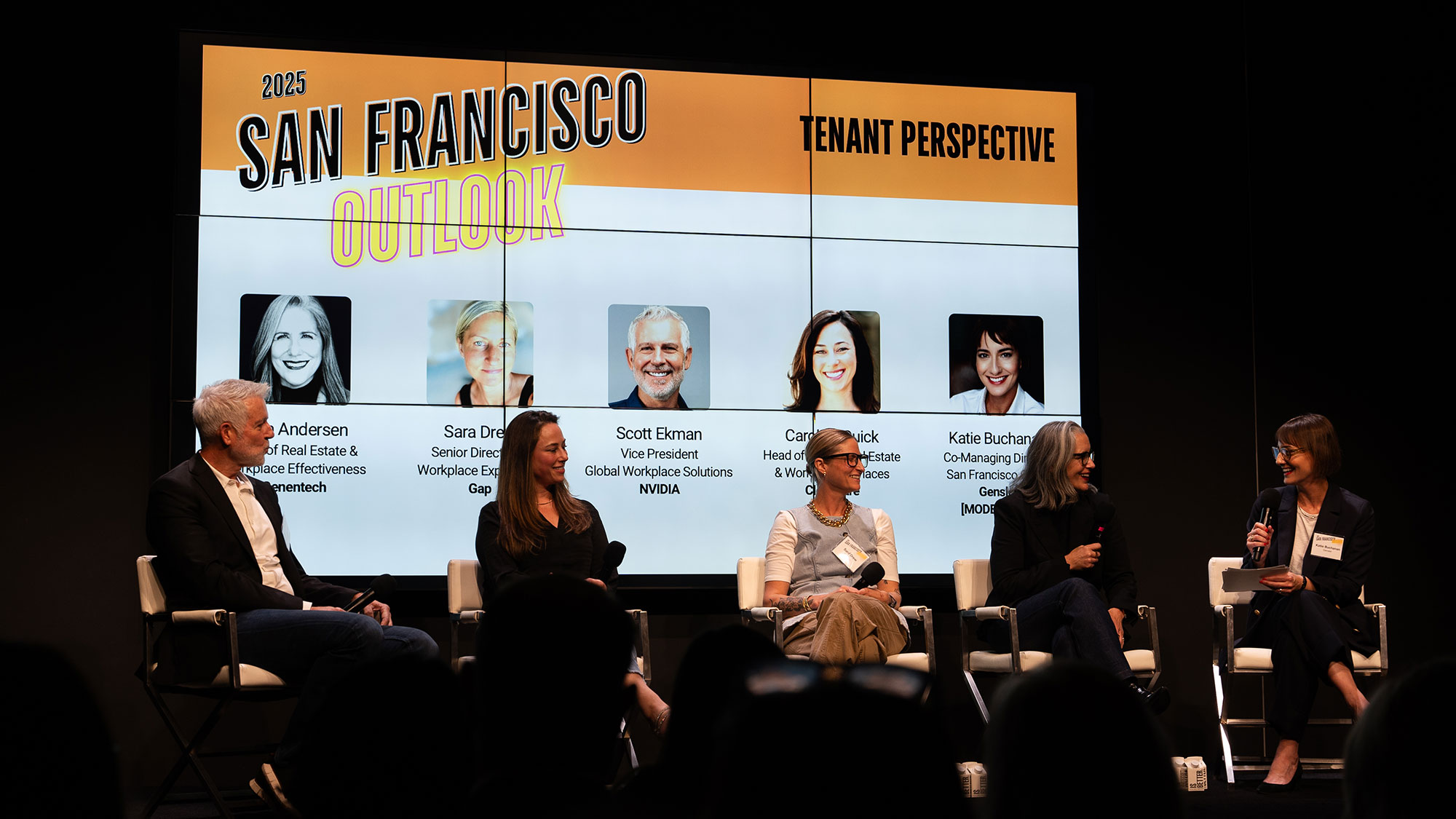
San Francisco’s office market struggles post-pandemic are well-documented. The city has been hit hard with tenant exits and downsizing, and vacancies reached a record high of 36.9% last year. But the tide appears ready to turn, as vacancies are decreasing, and return-to-office numbers are on the rise.
According to 2025 projections outlined in JLL’s San Francisco Office Market Dynamics - Q4 2024 research, vacancy rates are slowly declining and will continue to do so as the year progresses. The city’s startup population will grow its collective footprint, fueled by $43.7 billion in VC funding for the year — marking the highest in the U.S. and 21.1% of the national total. Return-to-office numbers, which have already increased 7% year-over-year, will continue to increase as in-person policies are enforced.
Against a backdrop of new ways of working and changing employee expectations, how can employers, landlords, and owners anticipate future needs, design with intentionality, keep pace with rapidly evolving technology, and offer authentic, engaging experiences?
At an event we held with The Registry, to kick off the year, “San Francisco Outlook 2025,” we brought together industry leaders to explore the state of the city’s office market and what’s next for its workplaces. Sharing insights from Gensler’s Design Forecast 2025, we dove into the trends shaping office environments today and learned how tenants at top companies are adapting to a fundamentally different world of work, all while preparing for the future.
Here are the top four takeaways from our Tenant Perspective Panel:
1. Delivering the Right Spaces in the Right Amounts
The formula for identifying what works, and in what quantity, has become a major pain point for tenants as they search for the ideal work environment amid fluctuating market conditions. Companies must adapt alongside the evolving CRE landscape and get creative to find the right spaces that support their individual growth and their employees’ needs.
As companies evaluate inventory and navigate how to invest in spaces that fit their needs, many are struggling to find the right supply at a time when demand is incredibly variable. To overcome this hurdle, the group agreed that a strategic approach is essential — one that balances future goals related to expansion, innovation, and experimentation with the type of work that needs to be done today.
2. Intentional Design for Optimal Experiences
Employees are increasingly seeking dynamic, choice-filled, amenities-forward environments, and employers must “make the experience worth the commute” without taking a blanket approach.
Today’s workplaces must be intentional in all aspects of design and functionality. Introducing variety for variety’s sake misses the mark and doesn’t yield great value or significance for tenants, panelists agreed, noting that this is often the result of a disconnect between tenants and landlords/building owners.
Many employees rely on amenities throughout the workday as a source of relief and respite, making it crucial for employers to understand what their workforces need and align with building owners and landlords to meet these needs. By demonstrating their capabilities to meet unique tenant requirements with curated offerings, landlords and business owners can differentiate themselves from other properties.
3. Embracing AI to Enhance Operations and Engagement
As technologies like AI advance, workplace functionality must at minimum keep pace. For tenants, this means staying ahead of the curve by being relentlessly curious.
When it comes to the rapid pace of technological advancement and how it will impact workplaces, Sarah Drew, Head of Workplace Experience at Gap, Inc., said she sees many companies getting stuck in the “eventuality” mindset, often putting them at a disadvantage.
“In three to six months, AI will be doing things we didn’t think possible three months ago — that changes everything. Understanding how we build and create space is now fundamentally different. By anticipating how we will interact with the technology, how it will impact our operations, and embracing all its capabilities, we can become more agile and adaptable to creating the optimal environment for employees and the work that needs to be done.”
No industry is immune from the impact of new, rapidly growing technologies. A wait-and-see ideology is particularly disadvantageous in a time when office market dynamics are frequently changing.
4. Work Is Less About What We Do and More About Why We Do It
According to Gensler’s Global Workplace Survey, the workplace is becoming more purpose-driven, with employees desiring greater connection to the work they do and who they do it with. A key factor compelling people back to the office centers on this idea of purpose, driven by the opportunity to meaningfully collaborate in an environment authentic to a brand’s culture and values.
For mission-driven companies, this means creating dynamic and engaging settings that mirror a company’s ethos, build camaraderie, and drive efficiency, all of which are invaluable in reaching a common goal. Sara Andersen, Head of Real Estate Workplace Effectiveness at Genentech, elaborated on the value of in-person work at her company, and what it means for her future workplace strategy. “With in-office work, we have spontaneous conversations and interactions not always possible in remote settings — this is where innovation happens. It changes how I think about real estate and where we will invest in new spaces going forward.”
A Balancing Act
Amid uncertainty, office real estate considerations must balance present needs and future demands. While agility and flexibility will be crucial, companies can’t lose sight of brand authenticity and a human-centered design approach.
As companies’ business and space needs change, design is a powerful tool to drive innovation, transformation, resiliency, and impact for companies across industries.
With an optimistic mindset and an understanding of this evolving market, we can work together to create workplaces in San Francisco and beyond that meet the current moment and are poised to adapt and thrive.
For media inquiries, email .
